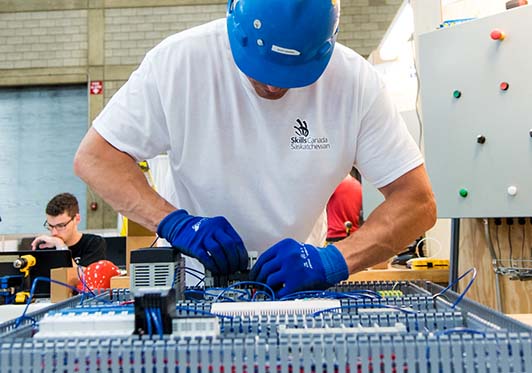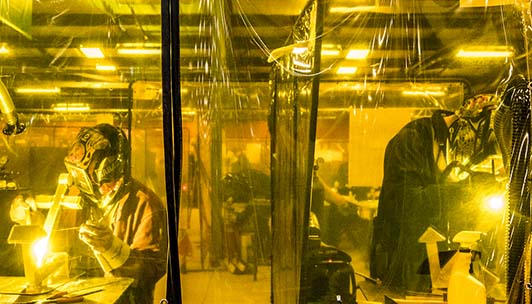Sheet Metal Work
What is sheet metal work?
Workers in this field fabricate and install a wide variety of construction related items using sheet metal or plastic materials components. The heating, ventilation and air-conditioning systems (HVAC ), that control the temperature, humidity and total air quality in residential, commercial, industrial and other buildings by precisely following blueprints, design specifications and manufacturers’ instructions. A Sheet Metal worker requires highly specialized and up to date skills to accomplish the various tasks involved in the trade.
In Sheet metal, technicians work with a variety of precision measuring tools to manipulate conditions such as pressures in air flow in duct systems. Voltmeters, pressure gauges, manometers and other testing devices are used in analyzing system performance. When servicing equipment, they must use extreme care in working with the different components of the HVAC Systems because of some of the intricate systems.
Sheet metal workers perform some or all of the following duties:
- Read engineering and architectural drawings, sketches and work specifications to be performed, and lay out, measure and mark sheet metal according to drawings or templates
- Develop patterns for sheet metal using computer-assisted design and drafting (CAD) software package
- Operate light metalworking machines such as shears, brakes, punches, and drill presses, including computer numerical control (CNC) equipment to cut, bend, punch, drill, shape or straighten sheet metal
- Operate computerized laser or plasma cutting equipment to cut sheet metal
- Install and use rigging and hoisting equipment
- Fit and join sheet metal parts using riveting, welding, soldering and similar equipment to fabricate products such as ventilation shafts, exhaust hoods, eavestroughs, partition frames, air and heat ducts, material handling systems, roof decking and sheet metal buildings
- Install sheet metal products according to specifications and building codes
- Grind and buff seams, joints and rough surfaces
- Inspect product quality and installation to ensure conformance to specifications.
HOW TO JOIN THE FIELD
Completion of secondary school is usually required.
Completion of a three-to-five-year apprenticeship program or A combination of over four years of work experience in the trade and some high school, college or industry courses in sheet metal working is usually required to be eligible for trade certification.
Trade certification is compulsory in Quebec, Ontario, Saskatchewan, Alberta and British Columbia and available, but voluntary, in all other provinces and the territories.
Interprovincial trade certification (Red Seal) is also available to qualified sheet metal workers.
INDIGENOUS AND REMOTE CONSIDERATIONS
Indigenous and remote communities may not have many people who work in this trade, so there likely wouldn’t be too much choice on jobs in this field. In small, fly-in communities, there may be only one or two companies to work for while staying in their home community. This may mean someone pursuing this trade will be looking at relocation or travelling to nearby communities.
With math literacy in the north being lower than in other places, northern and remote students may need extra support in order to pass tests and get their red seal.
DISABILITY CONSIDERATIONS
With this job being heavy manual labour, it may not be possible for someone with a severe physical disability. Accommodations may be necessary for someone with a learning disability.
Find the right career path for you with our interactive map!
Trouvez le cheminement de carrière qui vous convient grâce à notre carte interactive!
Sample Job Titles
- Boilermaker
- Steel fabricators
- Tinsmith
- Refrigeration
Companies and Sectors
- Residential homeowners
- Commercial organizations
- Construction industry
- Manufacturing industry
- HVAC Companies

Sheet Metal Work and the Skills for Success Program
The top three essential skills for this career path are:
- Reading
- Numeracy
- Problem Solving



